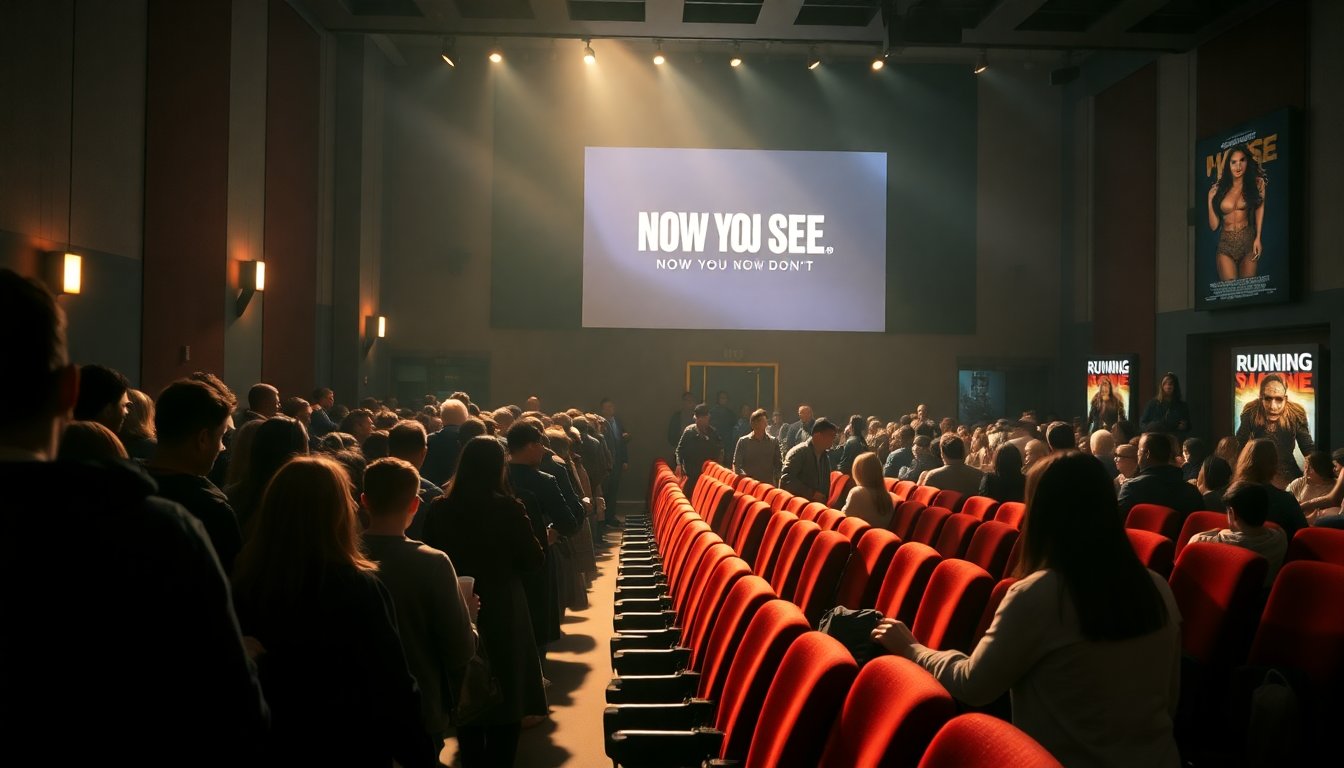Table of Contents
Lionsgate’s latest release triumphs at the box office
Lionsgate’s new film, Now You See Me: Now You Don’t, has secured a strong box office performance, outperforming Paramount’s The Running Man. The two films faced a competitive weekend, with one captivating audiences while the other disappointed. This analysis examines the elements that influenced this box office showdown, focusing on audience trends and the intricacies of film production.
Box office results: a tale of two films
Over the weekend, Now You See Me: Now You Don’t topped the box office with a gross of $21.3 million. The film has amassed a total of $75.5 million globally, including $54.2 million from 64 international markets. This performance highlights the film’s significant international appeal. Paul Dergarabedian, ComScore’s head of market trends, stated, “This franchise remains a viable asset, particularly with the support from overseas audiences.” The film’s success represents a notable turnaround for Lionsgate, which has struggled with its recent releases.
The appeal of franchise familiarity
Director Ruben Fleischer successfully brought back the original cast, including Jesse Eisenberg, Woody Harrelson, and Isla Fisher, evoking nostalgia among fans. By reintroducing these familiar faces and incorporating new talent like Justice Smith and Ariana Greenblatt, the film attracted both long-time followers and younger audiences. Kevin Grayson, head of domestic distribution at Lionsgate, noted that this strategy was key to broadening the film’s appeal, stating, “We gave the audience exactly what they were looking for.”
Paramount’s struggles with The Running Man
Paramount’s latest release, The Running Man, directed by acclaimed filmmaker Edgar Wright, experienced a lackluster opening weekend, garnering only $17 million. Despite high expectations for Glen Powell’s leading performance and the film’s adaptation from Stephen King’s dystopian narrative, it failed to connect with audiences. The disappointing turnout raises alarms, especially considering the film’s substantial $110 million budget. Industry analyst Jeff Bock remarked, “This thing is dead in the water. It doesn’t have enough traction to survive the coming holiday season.”
The demographics of disappointment
An analysis of audience demographics reveals significant differences between the two films. The Running Man attracted a predominantly male audience, with 63% of viewers identifying as male and 70% in the 18-44 age bracket. In contrast, Now You See Me: Now You Don’t appealed to a more balanced demographic, with 54% female viewers and 65% over the age of 25. This variation in audience appeal may have significantly influenced the box office results, as each film targeted different segments of moviegoers.
Industry implications and future outlook
The performances of these two films highlight significant trends within the film industry. Lionsgate is experiencing a resurgence, with anticipated releases such as The Housemaid and Michael, a biopic about Michael Jackson, poised to enter theaters in the coming years. Conversely, Paramount faces challenges as it deals with the aftermath of The Running Man‘s disappointing reception. The directorial decisions made by Wright are under examination, and the film’s inability to succeed may influence upcoming projects.
Looking to the future
Despite recent challenges, the box office landscape remains dynamic. The upcoming release of Wicked: For Good provides a glimmer of hope for theater owners aiming to recover from a disappointing fall season. As Dergarabedian notes, “We’re in the calm before the Thanksgiving storm. Things are about to heat up.” The evolving preferences of audiences and the industry’s adaptation to these trends will inevitably influence future film releases.
The weekend’s box office results illustrate a stark contrast between the performances of Now You See Me: Now You Don’t and The Running Man. While Lionsgate celebrates its success, Paramount faces the challenge of regrouping and reevaluating its strategies to attract viewers in a highly competitive market.


